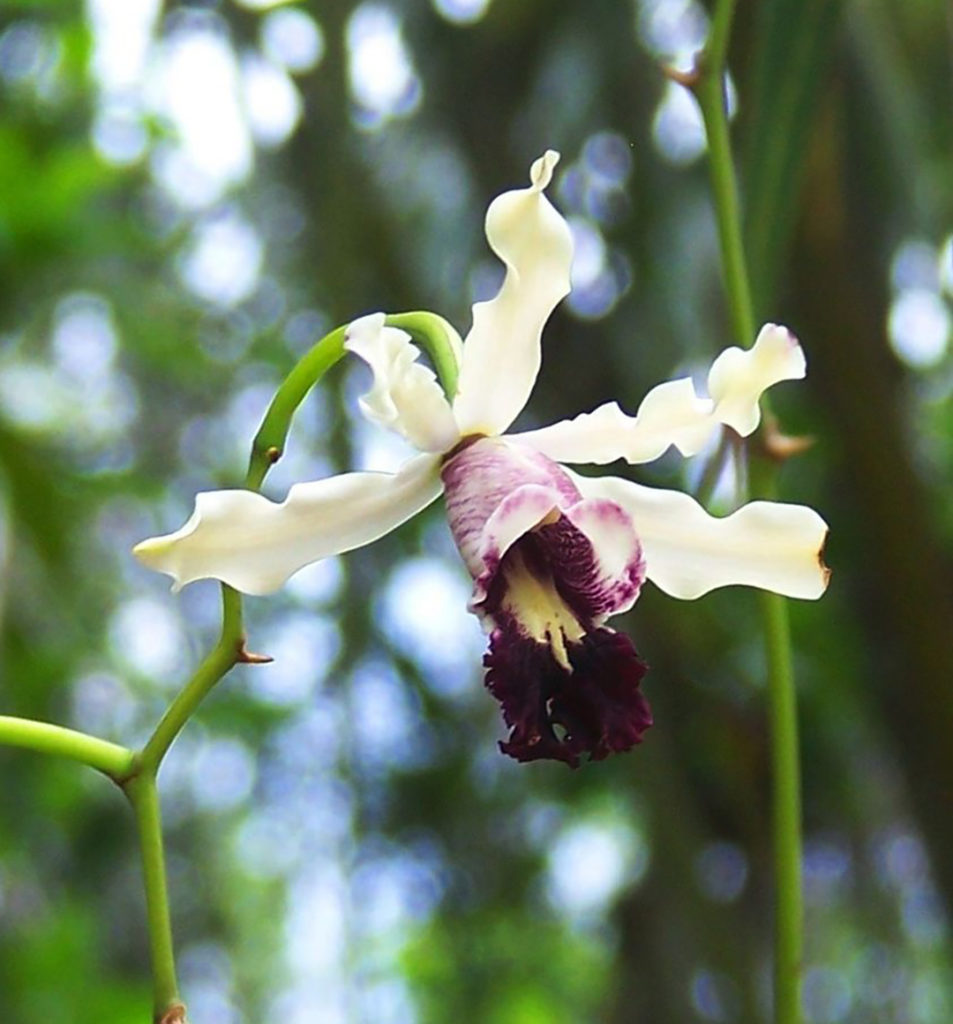
Cayman Islands
Wild Banana Orchid
Myrmecophila thomsoniana

General Description / Cultural Significance
The Wild Banana Orchid, Myrmecophila thomsoniana, found only in the Cayman Islands, flowers profusely after the rains in May and June. There are two varieties of this orchid. One is the Grand Cayman variety which has small scented white flowers with purple tips, and the second is a species found on Cayman Brac and Little Cayman which tends to be more yellowish. The flowers are positioned at the top of a long, curved spike. At the bottom of the plant is a cluster of finger-like pseudobulbs which were historically used to create pipes for smoking.
In 1996, the Government of the Cayman Islands declared the Wild Banana Orchid a national symbol. The flower was selected based on its inherent beauty, unique biological qualities, cultural and social importance and being representative of all three islands.
Climate Change/Conservation Status
The wild banana orchid itself has been brought to an endangered status for two reasons. Its rare status makes it a favorite of international plant thieves, who remove them forever from the wild. They are also endangered due to loss of habitat from real estate development. The native trees to which they cling are being cut down.
Conservation efforts are mounting to protect the orchid. Because protection of the species is necessary to ensure its future, it may soon no longer be found in the wild should its suitable habitats continue to diminish, and it is projected that its habitat lost will dramatically increase. The Cayman Islands Orchid Society, along with the Botanic Park, have constructed a shade house where orchids rescued from construction areas will be nurtured. The IUCN placed this plant on its Red List of Threatened Species in 2014, stating that, “Protection of suitable habitat on all three islands is the most pressing conservation action needed for this species. Trade in this species is regulated by CITES Appendix II. This species is included in the Cayman Islands National Biodiversity Action Plan 2009.” Stringent conservation is imperative for the survival of the Wild Banana Orchid, and it is now illegal to remove an orchid from the wild or export one from the islands.
The main climate change challenges to the Caymans are rising sea level, more frequent and intense hurricanes, and longer dry seasons and shorter wet seasons, which will affect the orchids that thrived on the island in its historic climate.
Alternate Names
Banana orchid
Sources
Burton, F.J., & Roberts, A. 2014. Myrmecophila thomsoniana. The IUCN Red List of Threatened Species. [website] DOI: 10.2305/IUCN.UK.2014-1.RLTS.T56499971A56503981.en.
Cayman Compass, 2017. A plant to know: wild banana orchid. The Cayman Compass. [website]
Taylor, S., 2005. Cayman Island Orchids. Bella Online. [website]
The Cayman Islands Tourist Bureau, New York, NY. This statement can be found on the World Sensorium original website.

